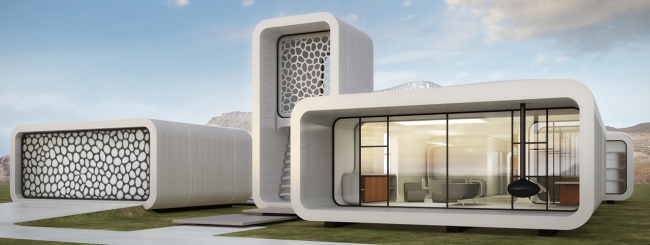The future is just around the corner. Until a few years ago 3D printing was only a figment of people’s imagination. Today, we can see the first results of what is considered to be one of the greatest innovations of our times.
As it is well known, 3D printers play a very important role in the medical field. However, something is finally changing.
3D printing: the first 3D-printed office
In fact, the world’s first 3D-printed office opened in Dubai. The 250 square metres building will host the temporary headquarters of the Dubai Future Foundation. This is the first office in the world built and designed with a 3D printer only.
Many important authorities of the UAE participated in the inauguration of this futuristic office, as a demonstration that this 3D office is just the beginning of a long series of similar projects.
Even Dubai governor and Prime Minister, Sheik Mohammed, stated that this 3D office represents a real milestone. Apart from what has been said, it is appropriate to say that this project represents a turning point for the construction industry.
Dubai: the hub for 3D printing technology
This project is not to be considered as a simple promotional event for Dubai, but it proofs that building with 3D printers is really possible. As a matter of fact, it seems that this project is only the first of a series of 3D buildings that will be built in Dubai.

Image credits: webnews.it
Dubai aims at becoming the world’s incubator for 3D printers. Dubai government has set a deadline for implementing such a project: by 2030 the UAE will be the world’s hub for 3D printing technologies. It goes without saying, that they will need some time to improve and deepen the different printing techniques. We will then have the opportunity of using them on a large scale, in both, architecture and construction industries.
This 3D-printed office in Dubai marks a bold step forward into the future. Nevertheless, before giving an objective opinion, it is appropriate to wait and understand if this technology can be actually implemented to build other types of buildings.
The advantages of 3D printing in the construction industry
This 3D building, where the Dubai Future Foundation has its headquarters, helped to better understand the peculiarities of 3D printers. First of all, the time that took to build the office is very interesting. Only, one expert – able to follow step by step the executive phase – 7 workers – who were in charge of installing every single component – and 10 electricians were needed to print the building. Certainly, to build such a building in the traditional way, more workers would have been needed.
However, what is really interesting is the working time: to give shape to the office it only took 17 days. Once the building was printed, several teams intervened to complete both the external and internal details.
What seems to be clear is that thanks to 3D printing, it is now possible to considerably reduce production costs. According to the first collected data, costs could be reduced by 50%. However, this costs reduction must be combined with a new approach to the labour market. The use of 3D printers can still generate jobs.
Nothing remains but to understand what will be the future of this new technology not only in Dubai but also throughout the world. What we need to ask ourselves now is, do we really want to look towards the future, leaving behind us the construction techniques of the past?
A 6 meters tall, 36 meters long and 12 meters wide 3D printer was used to build the office in Dubai. These numbers are indicative: with a medium size printer, we can build a solid, stable and big building in a short period of time. Moreover, we shouldn’t forget that this new construction technology takes into account the energy efficiency criteria and exploits the so-called passive air conditioning.
Are 3D printers the future of the construction industry?
Apparently, yes. It remains to understand what the actual impact on the labour market will be and the reactions in various countries. However, what we should keep in mind is that to use such instruments a certain know-how is necessary. Therefore, if Italy decides to implement such a technology, a series of educational initiatives should be organised to teach the future experts of this industry.
To conclude, the 3D printed office in Dubai has marked a major step forward the construction industry. Local and European policies will play a crucial role. The market could respond in a positive manner to such an innovation. The UAE message is very clear: 3D printers are the future. In the future, we might be thinking of building not only offices but also buildings for residential use. They could represent a very important turning point for both the economy of the construction industry, but more in general, for safety and energy efficiency. The quality of construction standards must be improved and this could be achieved thanks to 3D printers that could guarantee the planning of even smarter and safer buildings.
Now, we must wait and see which policies the UAE will set for this new technology. All eyes are on Dubai now: many projects are planned and this represent a great source of inspiration for all countries. Dubai is an open-air workshop that will provide a new approach to the construction industry leaving behind the traditional construction techniques.
